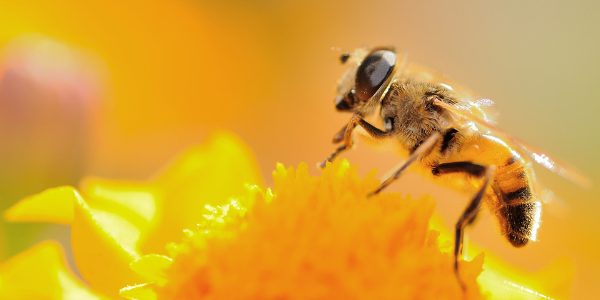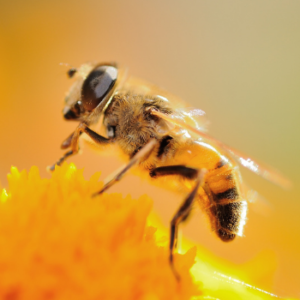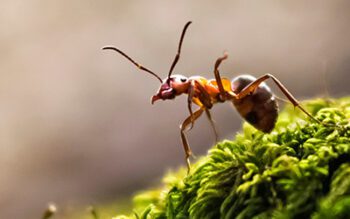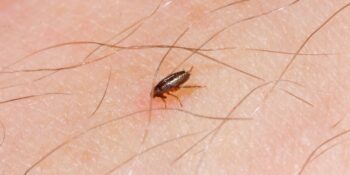
Bees are best known for their role in pollination and in the case of the honeybee, their ability to produce honey. Beyond these interesting behaviors, the various species of bees you’ll encounter on Long Island this summer have many more “un-bee-lievable” facts about them, so keep reading to learn more!
Bee Fact #1: 35% of the World’s Food Crops Depend on Pollinators 
Did you know that a significant percentage of the world’s most consumed food crops rely on pollinators? Three-fourths of the world’s flowering plants and 35% of the world’s food crops rely on pollinators! Some scientists even estimate that one out of every three bites of food we consume is made possible because of animal pollinators like bees, as well as birds, beetles, and other insects.
Bee Fact #2: Honeybees Have Four Wings
Though it may look like honeybees have two wings, these insects have four—two sets of two wings, with larger wings in the front.
Bee Fact #3: Honeybees May Produce Less Honey Than You Think…
One bee colony can produce 60 to 100 pounds of honey in a year, however an individual worker bee only makes around 1/12 a teaspoon of honey in its entire lifetime!
Bee Fact #4: Bumblebees Are Smart
Even though bumblebees have brains the size of poppy seeds, don’t be fooled; they’re smart enough to learn sports! In a study reported by BBC, scientists trained bumblebees to roll a ball to a goal and start scoring in return for a sweet treat.
Bee Fact #5: Honeybee Queens Can Be Replaced
If a honeybee hive’s queen dies, the worker bees can select a new queen bee! The workers construct special queen cells, which is where the larvae hangs out and is fed substantial amounts of “royal jelly.” Royal jelly is a honeybee secretion that is secreted in the glands of nurse bees and fed to all larvae in the colony. For the larvae in the special queen cells, this type of feeding triggers the development of a fertile queen bee.
Bee Fact #6: Beekeeping Is At Least 4,500 Years Old
The domestication of bees dates to Egyptian art from nearly 5,000 years ago! Simple hives were used, and honey was collected and stored in jars, some of which have been found in tombs of pharaohs like Tutankhamun.
Bee Fact #7: Bumblebees Have Smelly Feet
Bumblebees have an oily, smelly substance on their feet which they use to their advantage; these bees will use this substance to mark flowers which have already been stripped of pollen and nectar, which prompts future bumblebee visitors to not waste their time!
Bee Fact #8: Queen Bees Can Lay 3,000 Eggs a Day
It’s entirely possible for a healthy, fertile queen bee to lay eggs almost constantly; in fact, during peak season queens can lay over 3,000 eggs per day which is more than her own body weight.
Bee Fact #9: Bees Live in a Variety of Locations
Did you know bees can be found in some surprising locations? It’s possible to see then in marshes, sand dunes, wetlands, and more!
Bee Fact #10: You Can Help Protect Bees!
Protecting pollinators is possible in a variety of ways, and you don’t have to become a beekeeper to help! You can plant a variety of native flowers in your garden, or just chat with your friends and family about how important pollinators are to our ecosystem.
At Suburban, we understand the ecological importance of bee populations, and always treat clients’ bee concerns with the utmost care. We’ve developed strict company protocols to ensure the protection of pollinators, which is why we don’t treat honeybee hives; instead, we recommend our clients to local beekeepers who are delighted to harvest beehives. This ensures bee threats are removed, and the bees are utilized in a beneficial way.
If you have any questions about the types of bees on Long Island, we’re happy to help! Please call (631) 864-6900.





